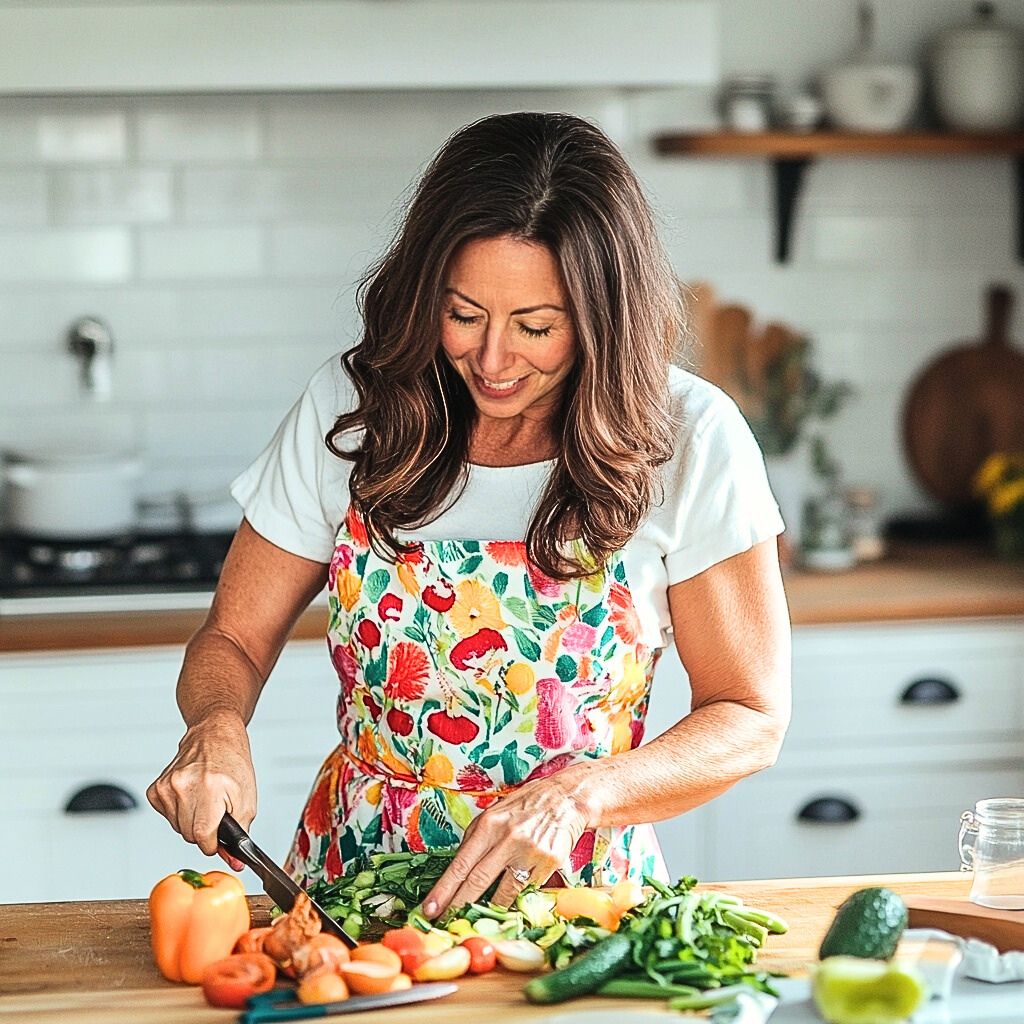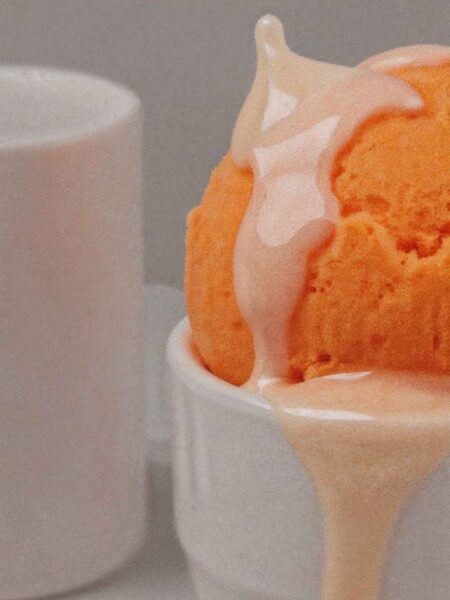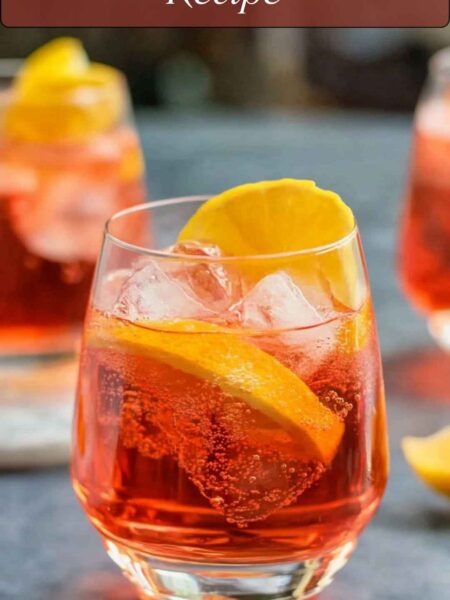Before diving into the captivating world of elderflower syrup, let’s take a moment to think about the delightful pairings that can elevate your experience. This syrup is incredibly versatile and can enhance a variety of dishes and drinks. Here are a few of my favorites:
- Sparkling Water: Elevate your daily hydration with a splash of elderflower syrup added to sparkling water. It creates a refreshing mocktail that’s perfect for summer afternoons.
- Desserts: Drizzle elderflower syrup over ice cream or yogurt. It adds a touch of floral sweetness that transforms ordinary desserts into something extraordinary.
- Cocktails: Mix it into cocktails for a floral note. It pairs wonderfully with gin, vodka, or prosecco.
- Salads: Combine elderflower syrup with vinegar and olive oil for a unique salad dressing. It adds a hint of sweetness that complements leafy greens beautifully.
- Cheese Platters: Use elderflower syrup as a drizzle over soft cheeses. It pairs particularly well with goat cheese or brie, creating a lovely harmony of flavors.
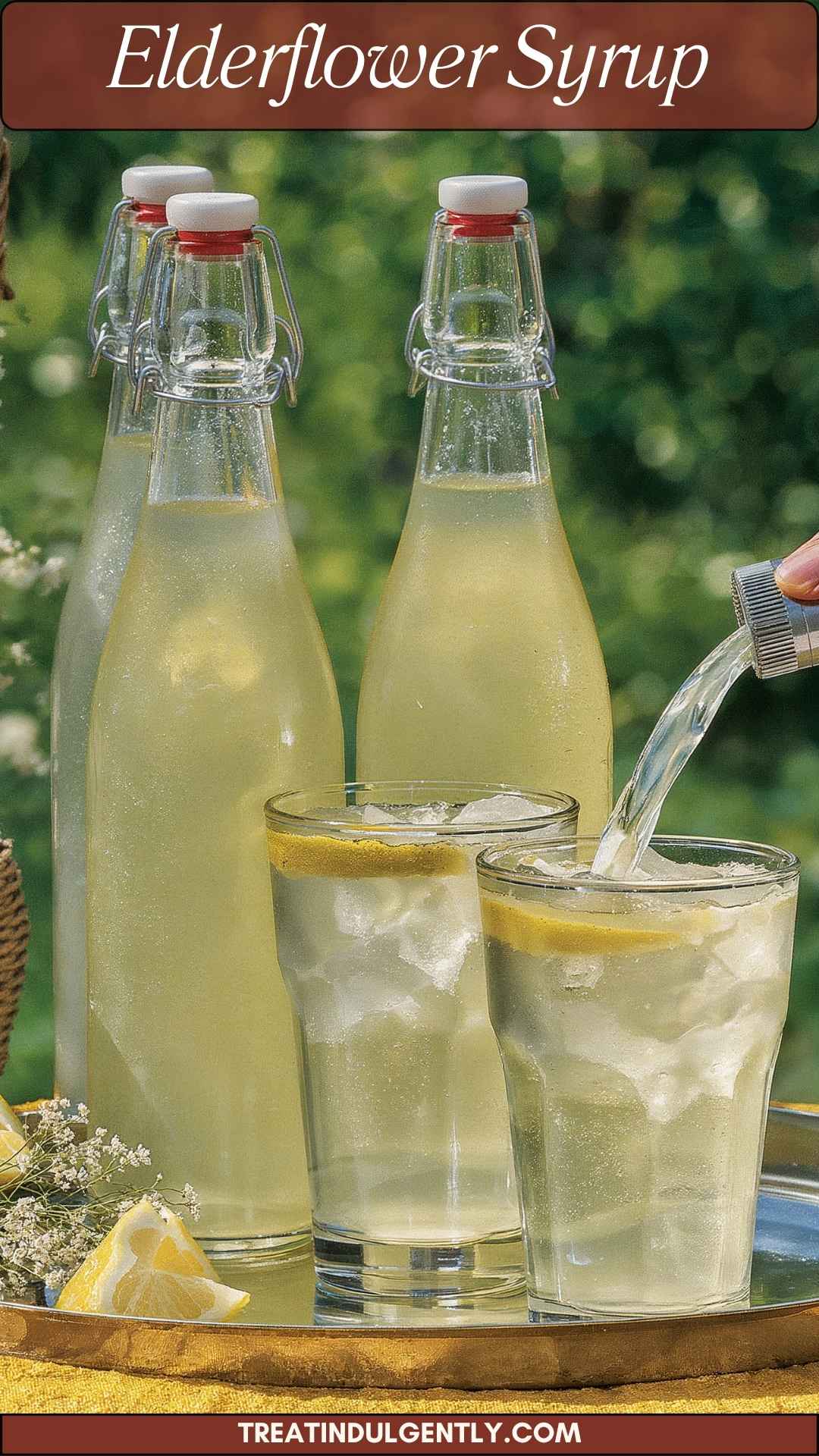
What is Elderflower Syrup?
Elderflower syrup is a sweet liquid made from the blossoms of the elderflower tree. The flowers bloom during late spring and early summer, offering a fleeting window to enjoy their unique flavor. Traditionally, this syrup has been used in various culinary applications. Its subtle floral sweetness can elevate drinks, desserts, and even savory dishes.
The syrup is made by infusing the delicate flowers with sugar and water, extracting their flavor to create a treat that can brighten up anything. Homemade elderflower syrup is not only delicious, but it is also a unique way to celebrate nature’s bounty.
Why You’ll Love This Elderflower Syrup Recipe
You might be wondering what makes this recipe so special. Well, let me tell you!
- Simplicity: The steps to create your own elderflower syrup are straightforward. With only a handful of ingredients and a little time, you’ll have a delightful treat.
- Natural Ingredients: This recipe focuses on using fresh, natural components. No preservatives or artificial flavors here!
- Versatility: The uses for elderflower syrup are endless. Impress your friends at a summer gathering or infuse your daily drinks with this delightful floral essence.
- Personal Touch: There’s something immensely satisfying about making something from scratch. You control the quality, flavors, and sweetness levels.
- Herbal Benefits: Elderflower is noted for its healthful properties, including antioxidants. While this syrup is a treat, it’s nice to know it has added benefits!
The Ingredients You Will Need To Make Elderflower Syrup
Gathering the right ingredients is key. For this elderflower syrup recipe, you will need:
- 4 cups granulated sugar: This is the base that will help in extracting and preserving the flavors.
- 1 quart purified water: Clean water allows the elderflower flavor to shine through.
- Juice from 2 fresh lemons: This adds a bright acidity that balances the sweetness perfectly.
- 25 fresh elderflower heads (about 2 cups, petals only, stems discarded): The star of the show! Make sure they are fresh and in bloom.
- Zest grated from 2 lemons: Adds an extra punch of citrus flavor.
- 1 teaspoon food-grade citric acid (optional): This can help preserve the syrup longer.
- 1 teaspoon lemon verbena leaves (optional): A lovely herbal note that enhances the syrup’s complexity.
- 1 tablespoon fresh mint leaves, chopped (optional): For a refreshing twist, especially perfect for summer drinks.
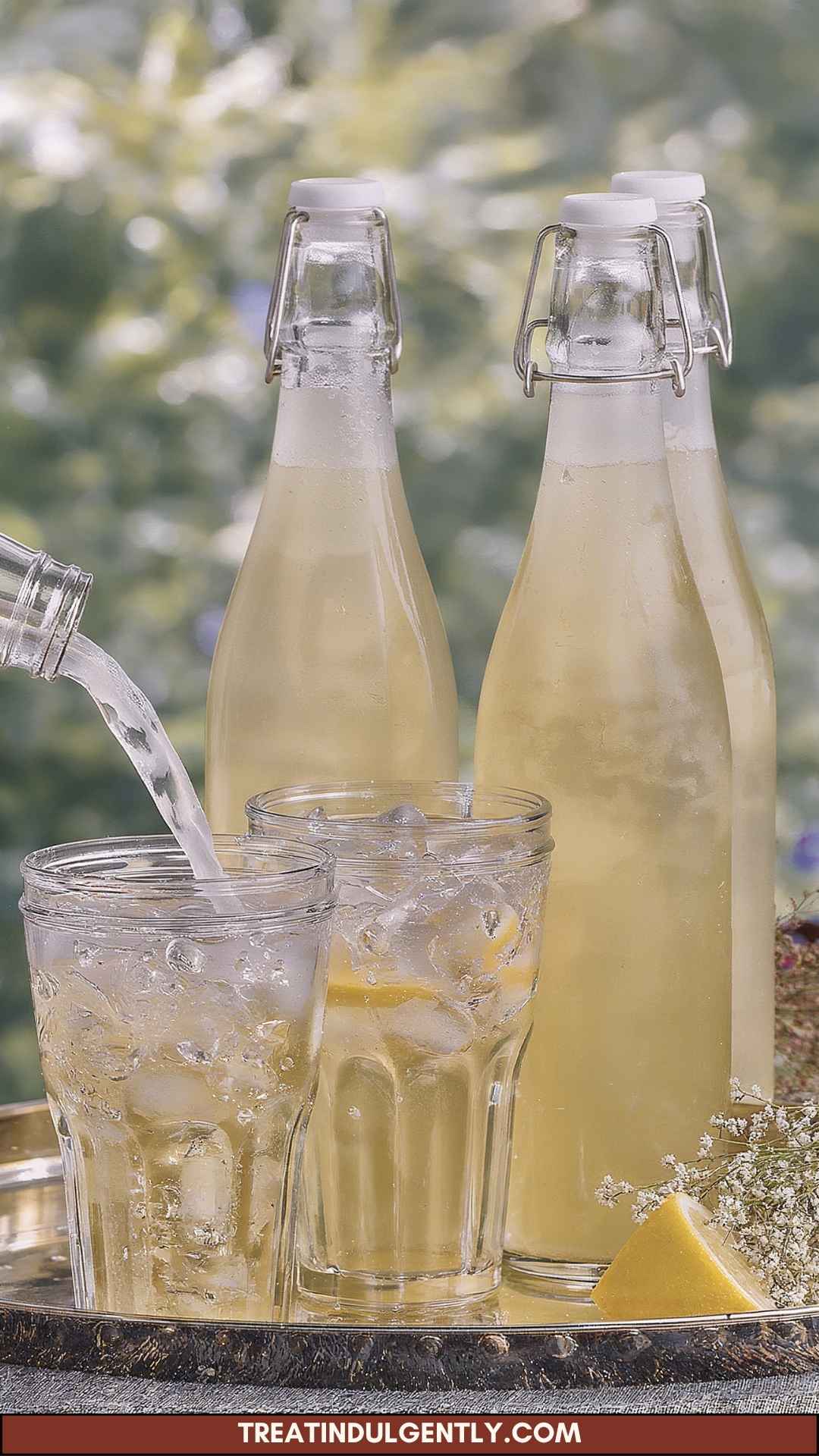
Directions
Step 1: Collect Your Elderflowers
The first step is the most fun! Go out and gather fresh elderflower heads. When selecting them, make sure they’re completely open, fragrant, and free of any blemishes. Be mindful of where you’re picking; ensure it’s pesticide-free and safe.
Step 2: Prepare Your Ingredients
Once you have your elderflowers, rinse them gently under cold water to remove any bugs or dirt. It’s crucial to keep the heads whole; this helps maintain their delicate flavor. Set them aside in a large bowl.
Step 3: Create the Syrup Base
In a medium saucepan, combine 4 cups of granulated sugar with 1 quart of purified water. Heat this mixture over medium heat, stirring until the sugar fully dissolves. This creates the base syrup.
Step 4: Infuse the Flavor
Once your sugar-water mix is boiling, remove it from the heat. Pour the hot syrup over the elderflower heads in the bowl. Add in the lemon juice, zest, citric acid, lemon verbena, and mint if desired. Stir gently to combine, and then cover the bowl with a clean cloth. Let this infusion sit for 24-48 hours in a cool place.
Step 5: Strain the Syrup
After infusing, strain the mixture through a fine mesh sieve or cheesecloth into a clean glass jar. Discard the elderflower heads and any solids from the syrup. If you like, you can double strain it to ensure clarity.
Step 6: Store the Syrup
Store your elderflower syrup in sterilized bottles or jars. Make sure you leave some headspace to allow for temperature changes. Once cooled, seal tightly and store in the refrigerator.
Notes
Here are five helpful tips to make your elderflower syrup experience even better:
- Freshness is Key: Use fresh elderflowers for the best flavor. Dried elderflowers won’t provide the same sweet and fragrant notes.
- Straining: To achieve a clear syrup, ensure you strain it well. Avoid pressing the flowers, which can release unwanted bitterness.
- Experiment with Herbs: Feel free to play with different herbs. Thyme or basil can add unique flavors that complement the elderflower.
- Adjust Sweetness: If you prefer a less sweet syrup, reduce the sugar gradually. You can always add more if needed.
- Keep Everything Clean: Ensure that all of your equipment, including jars and utensils, is thoroughly sanitized to extend the shelf life of your syrup.
Storage Tips
Elderflower syrup can last up to a month in the refrigerator. For longer storage, consider freezing in ice cube trays. Once frozen, transfer the cubes to a sealable bag. This way, you can enjoy a taste of summer whenever you want to recreate your favorite elderflower drinks.
Nutrition Information
A typical serving of elderflower syrup (1 tablespoon) contains approximately:
- Calories: 50
- Total Fat: 0g
- Sodium: 0mg
- Total Carbohydrates: 13g
- Sugars: 13g
This syrup mainly consists of carbohydrates from sugar. While it’s a sweet treat, moderation is key, especially if you are keeping an eye on sugar intake.
Serving Suggestions
Here are five delightful ways to serve your elderflower syrup, perfect for brightening up your summer:
- Elderflower Spritzers: Mix 2 tablespoons of elderflower syrup with sparkling water. Garnish with a slice of lemon and fresh mint. This crisp drink is refreshing and satisfying.
- Floral Lemonade: Blend elderflower syrup with freshly squeezed lemonade. The floral notes will add depth to the classic drink, making it a summer favorite.
- Pancake Topping: Drizzle elderflower syrup over pancakes or waffles instead of syrup. Add some fresh fruits to enhance the presentation and nutrition profile.
- Cocktail Mixer: Use it as a sweetener in cocktails. A gin elderflower tonic with a splash of syrup can elevate your drink to new heights!
- Ice Cream Delight: Pour elderflower syrup over vanilla ice cream. It’s a simple yet elegant dessert that will impress your guests.
What Other Substitutes Can I Use in Elderflower Syrup Recipe?
If you can’t find elderflowers, don’t worry! There are a few alternatives you can try. Here are five substitutes worth considering:
- Hibiscus Flowers: Dried hibiscus flowers can create a syrup that’s tangy and floral, offering a beautiful color and flavor that can be a lovely twist.
- Lavender Buds: Using dried culinary lavender can infuse your syrup with a distinct aroma and flavor, reminiscent of the countryside.
- Rose Petals: Edible rose petals can create a fragrant syrup with a romantic flair. Expect a slightly different flavor, but it’s just as delightful.
- Chamomile Flowers: These provide a sweet, calming effect, lending a unique twist when added to your syrup base.
- Lemon Verbena: If you can’t find elderflowers, using lemon verbena can create a refreshing citrusy syrup that’s perfect in drinks.
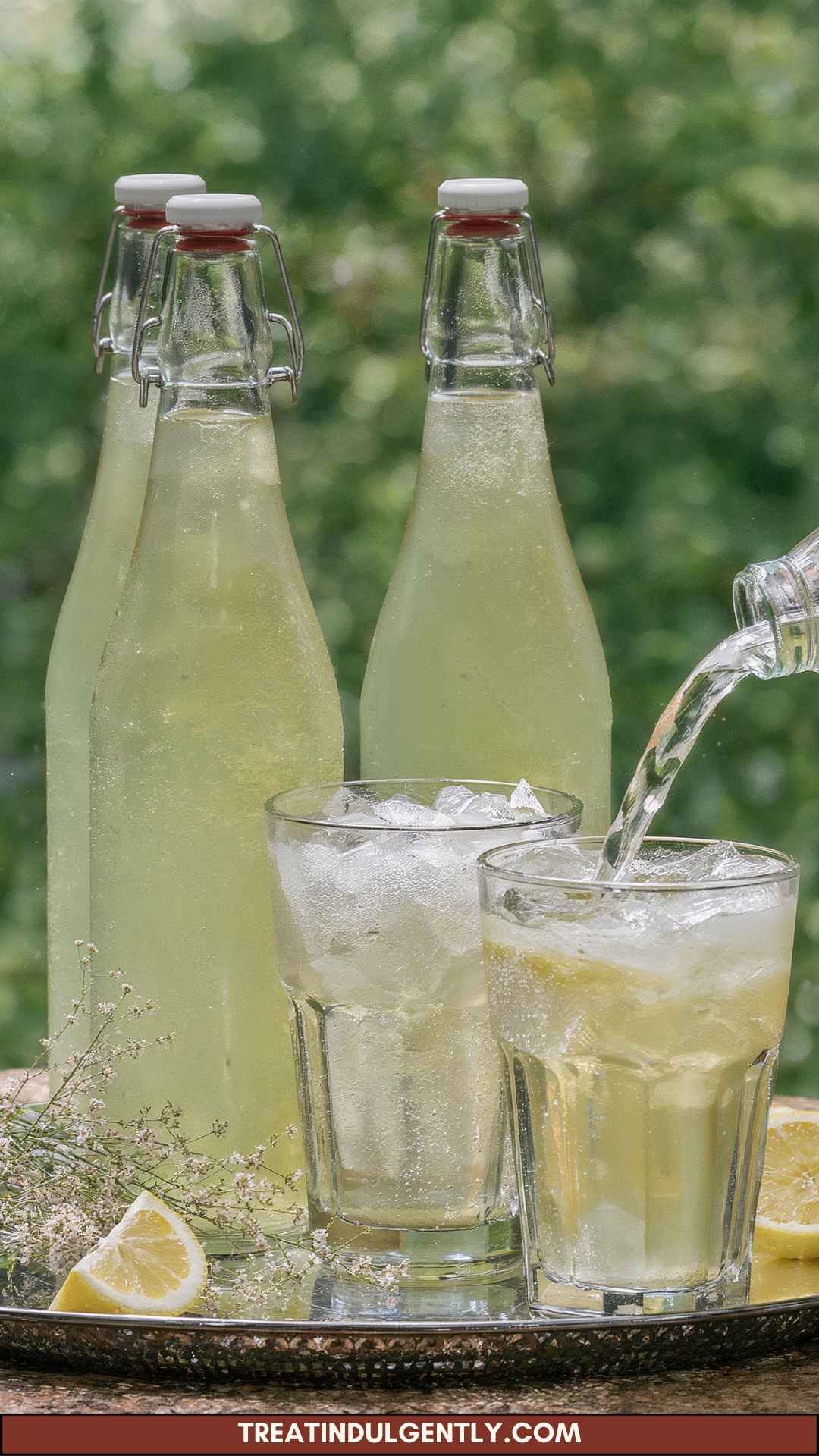
Conclusion
As we wrap up this delightful journey into the making of elderflower syrup, I hope you’re inspired to give it a try. You now have the tools, tips, and techniques to create a treat that’s not only delicious but also connects you with the beauty of nature. Imagine serving this syrup at your next gathering or simply indulging in your own little treat.
So, grab some elderflowers if they’re in season, or think about planting an elderflower bush for the future, and let the sweet, floral magic of elderflower syrup bring joy to your kitchen! Happy cooking!
You’ll also like the following recipes!
- Chocolate Nutella Feuilletine Crunch
- Pistachio Sour Cream Cheesecake
- Sakura Matcha Mousse Cake Recipe
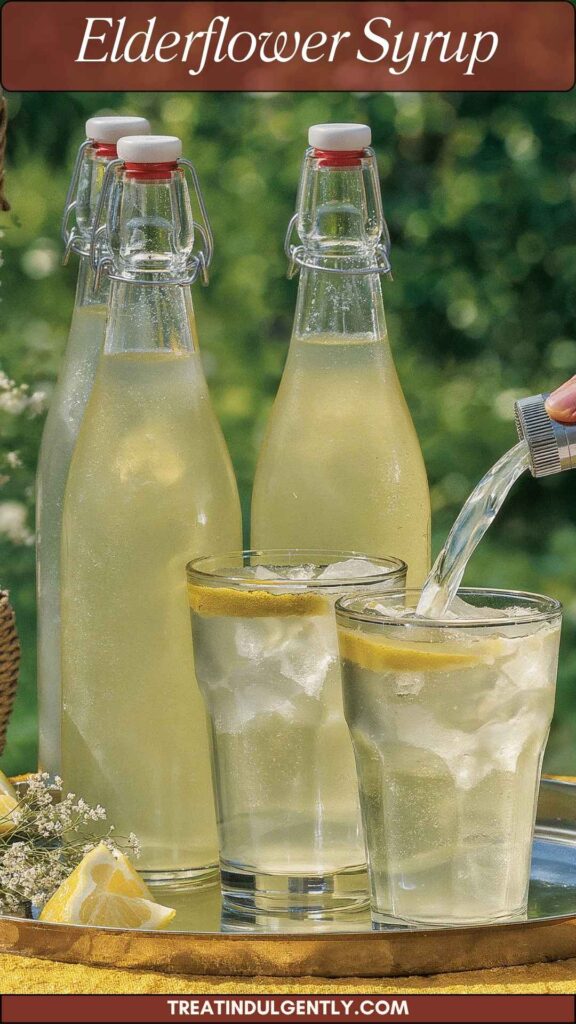
Elderflower Syrup – Treat Indulgently
Description
Hello there! Today, I’m thrilled to share my favorite elderflower syrup recipe with you. If you haven’t tried elderflower syrup yet, you’re in for a treat!
This syrup captures the delicate floral notes of elderflower and transforms them into a sweet elixir that can be enjoyed in countless ways. I discovered elderflower syrup a few summers ago when I stumbled upon some wild elderflowers during a hike. The world seemed to stop as I inhaled their sweet scent. Little did I know, I was about to embark on a delicious adventure in my kitchen.
Crafting elderflower syrup is not just a cooking endeavor; it's a chance to connect with nature and create something wonderful. Let’s explore what elderflower syrup is, why it’s so adored, and how you can make it yourself.
Ingredients
Instructions
Step 1: Collect Your Elderflowers
-
The first step is the most fun! Go out and gather fresh elderflower heads. When selecting them, make sure they’re completely open, fragrant, and free of any blemishes. Be mindful of where you’re picking; ensure it’s pesticide-free and safe.
Step 2: Prepare Your Ingredients
-
Once you have your elderflowers, rinse them gently under cold water to remove any bugs or dirt. It’s crucial to keep the heads whole; this helps maintain their delicate flavor. Set them aside in a large bowl.
Step 3: Create the Syrup Base
-
In a medium saucepan, combine 4 cups of granulated sugar with 1 quart of purified water. Heat this mixture over medium heat, stirring until the sugar fully dissolves. This creates the base syrup.
Step 4: Infuse the Flavor
-
Once your sugar-water mix is boiling, remove it from the heat. Pour the hot syrup over the elderflower heads in the bowl. Add in the lemon juice, zest, citric acid, lemon verbena, and mint if desired. Stir gently to combine, and then cover the bowl with a clean cloth. Let this infusion sit for 24-48 hours in a cool place.
Step 5: Strain the Syrup
-
After infusing, strain the mixture through a fine mesh sieve or cheesecloth into a clean glass jar. Discard the elderflower heads and any solids from the syrup. If you like, you can double strain it to ensure clarity.
Step 6: Store the Syrup
-
Store your elderflower syrup in sterilized bottles or jars. Make sure you leave some headspace to allow for temperature changes. Once cooled, seal tightly and store in the refrigerator.
Nutrition Facts
Servings 16
- Amount Per Serving
- Calories 50kcal
- % Daily Value *
- Total Carbohydrate 13g5%
- Sugars 13g
* Percent Daily Values are based on a 2,000 calorie diet. Your daily value may be higher or lower depending on your calorie needs.
Note
- Freshness is Key: Use fresh elderflowers for the best flavor. Dried elderflowers won't provide the same sweet and fragrant notes.
- Straining: To achieve a clear syrup, ensure you strain it well. Avoid pressing the flowers, which can release unwanted bitterness.
- Experiment with Herbs: Feel free to play with different herbs. Thyme or basil can add unique flavors that complement the elderflower.
- Adjust Sweetness: If you prefer a less sweet syrup, reduce the sugar gradually. You can always add more if needed.
- Keep Everything Clean: Ensure that all of your equipment, including jars and utensils, is thoroughly sanitized to extend the shelf life of your syrup.


